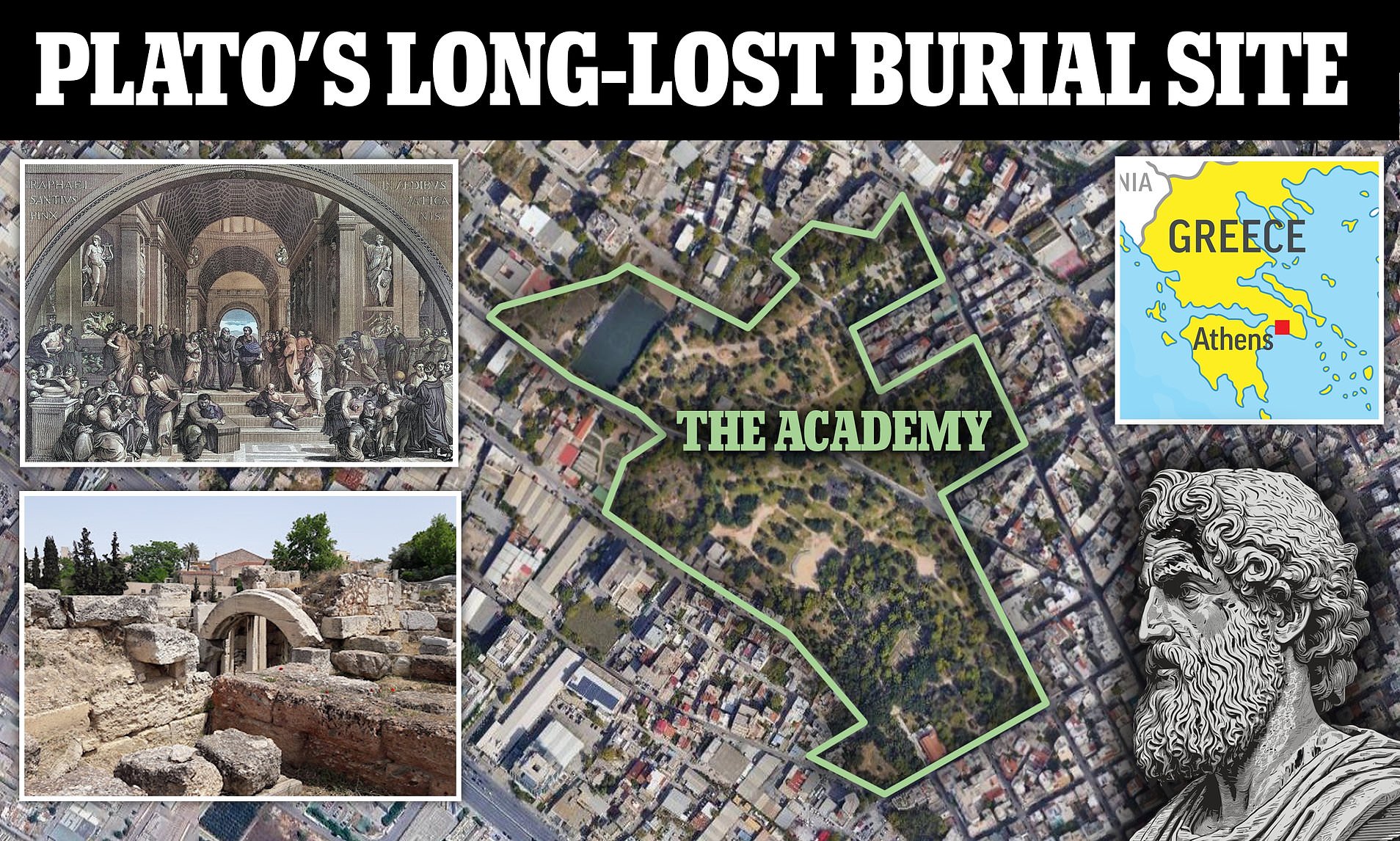
PLATO'S EXACT BURIAL SITE HAS BEEN FOUND IN GREECE, RESEARCHERS CLAIM
- AI was used to decipher 1,000 more words of the Herculaneum scrolls
- Researchers found the text revealed the exact spot where Plato was buried
- READ MORE: Students use AI to read more than 2,000 words on scroll
An Italian researcher has claimed to have found the long-lost burial place of the famed Greek philosopher Plato who died around 348 BC.
Graziano Ranocchia used AI to decipher the Herculaneum scrolls, charred papyrus found buried by the Mount Vesuvius eruption in 79AD, revealing new text that pointed to an exact location in Athens.
The analysis showed Plato was buried in 'The Academy,' a famous school founded by the philosopher in 387 BC, near the so-called Museion - a small building sacred to the Muses that no longer stands among the ruins.
Ranocchia and his team uncovered 1,000 words, corresponding to 30 percent of the text, using the 'bionic eye' - and believe they will have the papyrus completely analyzed by 2026.
'Compared to previous editions, there is now an almost radically changed text, implying a number of new and concrete facts about various academic philosophers,' Ranocchia said in a statement.
'Among the most important news, we read that Plato was buried in the garden reserved for him (a private area intended for the Platonic school) of the Academy in Athens, near the so-called Museion or sacellum sacred to the Muses.
'Until now it was only known that he was buried generically in the Academy.'
Plato, who died around 347BC, is arguably the greatest of all the Greek philosophers.
With his mentor Socrates, and student Aristotle, he laid down the foundations of Western philosopher and science.
The Academy once sat on the outskirts of Athens on property Plato acquired in 387 BC, which is known as the first institution of higher learning.
Ranocchia and his team have uncovered 30 percent more text within the Herculaneum papyri than in the previous 1991 edition.
The new analysis also revealed that Plato may have been sold into slavery in 399 BC following Socrates' passing or in 404 BC during the Spartan conquest of Aegina.
'Until now it had been believed that Plato had been sold into slavery in 387 BC during his stay in Sicily at the court of Dionysius I of Syracuse,' said Ranocchia.
'In another passage, in a dialogue between characters, Plato expresses himself contemptuously about the musical and rhythmic abilities of a barbarian musician originally from Thrace.'
Ranocchia and his team set up a laboratory years ago in the Italian National Library in Naples, allowing easier access to Herculaneum scrolls stored at the facility.
Using a camera, they took hundreds of photos of the charred document that were analyzed by an algorithm.
The researchers used infrared imaging, which allowed them to 'see' through the front side of the papyrus to the writing on the back, according to Science.org.
The charred scrolls resurfaced in 1752 in a villa near the Bay of Naples that was once believed to belong to the father-in-law Julius Caesar, but their contents have remained a mystery as scientists judged them too fragile to unfurl.
Read more 2024-04-23T19:48:52Z dg43tfdfdgfd